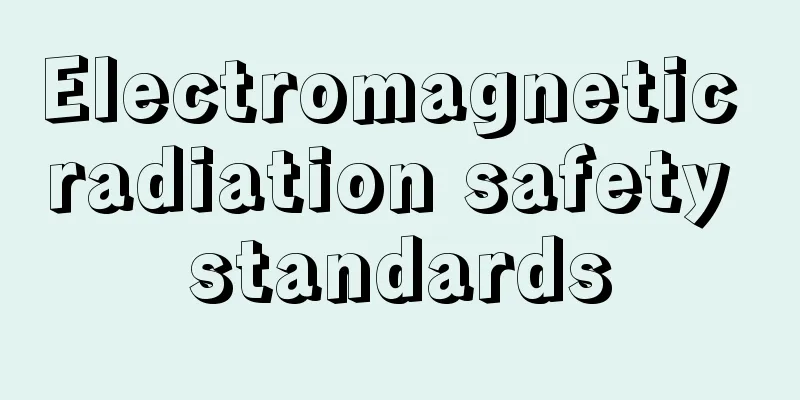Electromagnetic radiation safety standards

|
There is a kind of radiation in nature called electromagnetic radiation, which was later discovered by people and widely used in life. Induction cookers, ovens, microwave ovens, etc. are mainly based on the principle of electromagnetic radiation. However, normal people should know that excessive radiation will have a great impact on a person's health. Therefore, every country should have normal safety standards for electromagnetic radiation. So what are the safety standards for electromagnetic radiation in my country? 1. National standards for electromagnetic radiation The "Electromagnetic Radiation Protection Regulations" (GB8702-88) issued by my country's State Environmental Protection Administration has determined the national standard for electromagnetic radiation: within the frequency range of 30-3000MHz, the public is exposed to the environmental electromagnetic radiation field within 24 hours a day, and the average value of the field quantity parameters within any continuous 6 minutes does not exceed 0.4W/m2. Electromagnetic radiation, also known as electronic smog, is composed of electrical energy and magnetic energy transferred together in space, and this energy is generated by the movement of electric charges. For example, electromagnetic energy is generated by moving charges from a transmitting radio frequency antenna. The electromagnetic "spectrum" includes all forms of electromagnetic radiation, from extremely low frequency electromagnetic radiation to extremely high frequency electromagnetic radiation. In between there are radio waves, microwaves, infrared rays, visible light and ultraviolet light. The radio frequency portion of the electromagnetic spectrum is generally defined as radiation with frequencies from about 3 kHz to 300 GHz. Some electromagnetic radiation has certain effects on the human body. 2. What are the electromagnetic radiation safety standards? The maximum permissible limit of electromagnetic field intensity in different locations is established to effectively protect the health of workers, prevent ignition and explosion, interference with electronic equipment, and prevent environmental pollution. Including electromagnetic radiation operation safety standards, electromagnetic radiation environmental safety standards, electromagnetic leakage control standards and electromagnetic radiation interference standards. 3. National regulations on electromagnetic radiation safety values Electromagnetic radiation is divided into two levels: the unit of the industrial frequency band is μT, which tests industrial frequency electromagnetic waves below 50 Hz. (For example, household appliances and high-voltage lines) If the radiation is above 0.4μT, it is considered strong radiation. The radiation is between 0.3 and 0.4μT, which is a warning value. As for 0.3μT, especially below 0.1μT, it can be considered safe. The unit of radio frequency electromagnetic wave is μW/㎝2 (for example, microwave ovens, mobile phones, and radio and television base stations generally measure frequencies from several hundred to thousands of hertz). Above 10μW/㎝2 will cause harm to the human body. |
<<: What shoes look good on a short person
>>: Is fasting blood sugar 59 normal?
Recommend
Dehydration treatment for increased intracranial pressure in brain cancer
Increased intracranial pressure is an important p...
Raised mole removal
A mole is medically called a nevus cell or melano...
What tests can confirm gastric cancer?
The diagnosis of gastric cancer needs to be confi...
How to treat raised surgical scars effectively
After surgical treatment, surgical scars will be ...
What should I do when I get angry?
Frequently getting angry is not good for health, ...
The simplest and fastest way to replenish qi and blood
Qi and blood are the life of women, and are the m...
How should lung cancer patients eat? These three kinds of food are suitable for lung cancer patients
The emergence of lung cancer has seriously affect...
Pepsinogen 1 is high
Pepsin is a very common enzyme secreted by our st...
Traditional Chinese medicine prescription for treating bladder cancer
Bladder cancer can be divided into many categorie...
Which is more accurate, blood test or ultrasound?
If women's menstruation is delayed for severa...
Can I eat mango after double eyelid surgery
Many people want their eyes to be big and round, ...
Symptoms of late-stage endometrial cancer
What are the symptoms of late-stage endometrial c...
The simplest way to make red bean cake
Red beans are the most common in our lives. Most ...
Can optic atrophy be reversed?
The problem of optic nerve atrophy cannot be igno...
How long does it take for ginger water to take effect when washing hair
According to folklore, ginger water is very effec...









